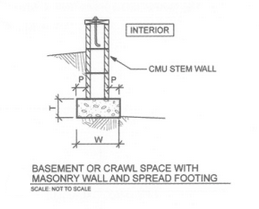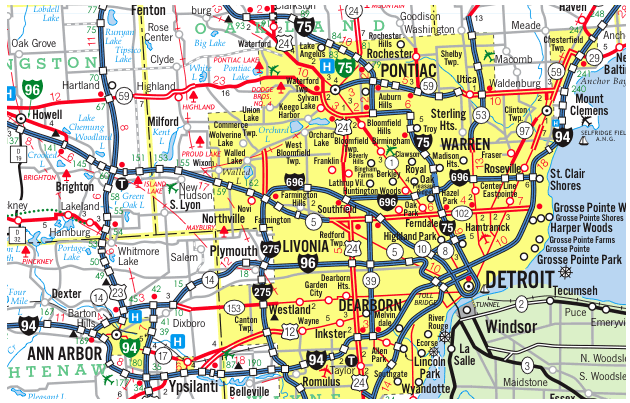The Importance of Making Footings Twice as Wide as the Wall They Support
In construction, the foundation is one of the most critical elements of a building’s structural integrity. The footing, a part of the foundation, plays a crucial role in distributing the weight of the structure to the soil beneath it. One key principle in foundation design is to make the footing at least twice as wide as the wall it supports. This approach is not just a matter of tradition or convention; it is based on sound engineering principles that ensure the long-term stability and durability of the structure. Below, we explore the reasons why this practice is considered a good one.
1. Better Distribution of Loads
One of the primary functions of a footing is to distribute the weight of the structure above it to the ground below. The wider the footing, the larger the area over which the load is spread. If the footing is too narrow, the weight of the building could exert excessive pressure on the soil underneath, leading to soil settlement or even structural failure.
Making the footing twice as wide as the wall helps reduce the pressure on the soil, ensuring that the load is distributed evenly over a larger area. This can prevent the soil from becoming overloaded and deforming, which could result in settling or tilting of the structure.
2. Improved Stability and Resistance to Shifting
Soil can vary in terms of its load-bearing capacity depending on its type, moisture content, and other factors. A wider footing creates a larger surface area in contact with the soil, increasing its ability to resist shifting or movement. In areas with weak or unstable soil, having a wider footing helps ensure that the building remains stable and secure, even under adverse conditions like changes in moisture levels or ground movement.
Additionally, a larger footing can reduce the likelihood of differential settlement, where different parts of a building settle unevenly. This can prevent cracks in walls, uneven floors, and other structural issues that arise from uneven settling.
3. Reduced Risk of Overloading the Soil
Soil has a maximum bearing capacity, which is the amount of weight it can support without experiencing failure or excessive settlement. If the footing is too narrow, it could exert a concentrated load that exceeds the soil’s bearing capacity, leading to problems such as subsidence or the development of cracks in the foundation. By making the footing wider, the load is spread out over a larger area, reducing the likelihood of overloading the soil.
This practice is especially important in areas with less stable soil conditions, such as clay, loose sands, or silty soils, where the soil may have a lower bearing capacity than more solid ground like rock or dense gravel.
4. Enhanced Durability and Longevity
Building codes and engineering guidelines often recommend that the footing be twice as wide as the wall for long-term durability. A footing that is properly sized helps prevent issues such as cracking, bowing, or shifting of the foundation, all of which can lead to expensive repairs and potentially dangerous situations in the future. A wider footing provides additional stability, ensuring that the foundation can handle both the weight of the structure and any environmental stressors (such as wind, seismic activity, or water intrusion) over time.
By taking these considerations into account early in the design and construction process, you can ensure that the building remains structurally sound throughout its lifespan.
5. Adaptability to Different Types of Walls
Different types of walls, such as load-bearing or non-load-bearing, will impose different levels of stress on the foundation. Load-bearing walls, for instance, carry significant weight from the upper floors and roof, requiring stronger foundations. By making the footing twice as wide as the wall, the design is more adaptable to a variety of wall types, offering sufficient support even for heavy, load-bearing walls.
6. Cost-Effective in the Long Run
Although constructing wider footings may seem like an additional cost initially, the benefits far outweigh the potential risks of an insufficiently sized footing. Foundations that are not properly designed may need to be repaired or replaced over time, leading to greater costs down the road. By opting for a wider footing from the start, you reduce the likelihood of encountering issues like soil failure, settlement, or cracking, which could lead to expensive foundation repairs or even structural collapse.
Conclusion
Designing footings that are twice as wide as the wall they support is a time-tested practice in construction that ensures the stability, safety, and durability of a building. By improving load distribution, reducing the risk of soil overload, and enhancing the foundation’s resistance to shifting, this approach helps prevent costly damage and ensures the longevity of the structure. It also promotes adaptability for various wall types and provides a cost-effective solution in the long run. For these reasons, it is always wise to adhere to the guideline of making the footing at least twice as wide as the wall it supports, ensuring the structural integrity of the building for many years to come.





 Our Construction company is Servicing Southeast Michigan, Detroit and the Tri-County area Wyane, Oakland and Macomb;
Our Construction company is Servicing Southeast Michigan, Detroit and the Tri-County area Wyane, Oakland and Macomb;

